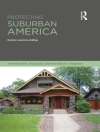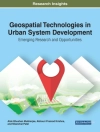Während die Effizienz- und Nachhaltigkeitsoffensive in den meisten Wirtschaftsbereichen in vollem Gang ist, steht das Bauen damit noch ganz am Anfang – ökonomisch wie ökologisch. Die Politik auf globaler, europäischer und nationaler Ebene nimmt sich dieses Defizits inzwischen zunehmend an und versucht es durch rechtliche Anforderungen und Gesetze wie En EV, Gebäudezertifizierungen und Wettbewerbe wettzumachen.
Der Energie Atlas gibt in der bewährten Form der Atlanten eine umfassende Darstellung der konstruktiven Parameter von Energieeffizienz und Nachhaltigkeit wieder. Er nimmt die von der EU geplanten gesetzlichen Regulierungen vorweg und weist als unmittelbar verwendbare Arbeitshilfe für die tägliche Arbeit von Architekten, Ingenieuren und Designern den Weg zu effizientem und nachhaltigem Bauen und Betreiben von Gebäuden.
Mit seiner Orientierung am gesamten Lebenszyklus eines Gebäudes leistet er eine ganzheitliche Betrachtung – eine unverzichtbare Voraussetzung für nachhaltiges Wirtschaften.
Daftar Isi
Contents
Preface 6
Part A Positions 8
1 Global change
Chris Luebkeman 10
2 Energy change
Hermann Scheer 14
3 Architecture and sustainability –
a difficult relationship
Robert Kaltenbrunner 18
4 Doing things right –
on efficiency
and sustainability
Manfred Hegger 24
5 Solar Architecture
Thomas Herzog 28
6 Planning and building in life cycles
Karl-Heinz Petzinka, Bernhard Lenz 32
Part B Planning 36
1 Fundamentals 38
Global boundary conditions 39
Energy 43
Climate and comfort 51
2 Urban space and infrastructure 62
Land use 62
Planning to suit the location 65
Infrastructure and technical services 70
3 Building envelope 82
Maintaining and gaining heat 86
Avoiding overheating 95
Decentralised ventilation 99
Using the daylight 102
Generating electricity 106
4 Building services 110
Sustainable building services 110
Heating 113
Cooling 128
Mechanical ventilation 133
Optimising the artificial lighting 136
Generating electricity 138
5 Materials 146
Heat flow 148
Embodied energy 159
Materials in the life cycle 165
6 Strategies 176
Energy concepts 177
Politics, legislation,
statutory instruments 183
Planning process 186
Sustainable architecture 190
Diagnosis system for sustainable
building quality (DSQ) 192
Part C Case studies 198
Project examples 1 to 20 200 – 257
Part D Appendix 258
Parameters 258
Climate data 260
LCA data 262
Statutory instruments, directives,
standards 268
References 269
Picture credits 272
Subject index 276
Tentang Penulis
Manfred Hegger, Dipl.- Ing. M. Econ Architekt, Dipl.- Ing. Architekt Matthias Fuchs, Dr.-Ing. Thomas Stark, Dipl.-Ing. Martin Zeumer.












